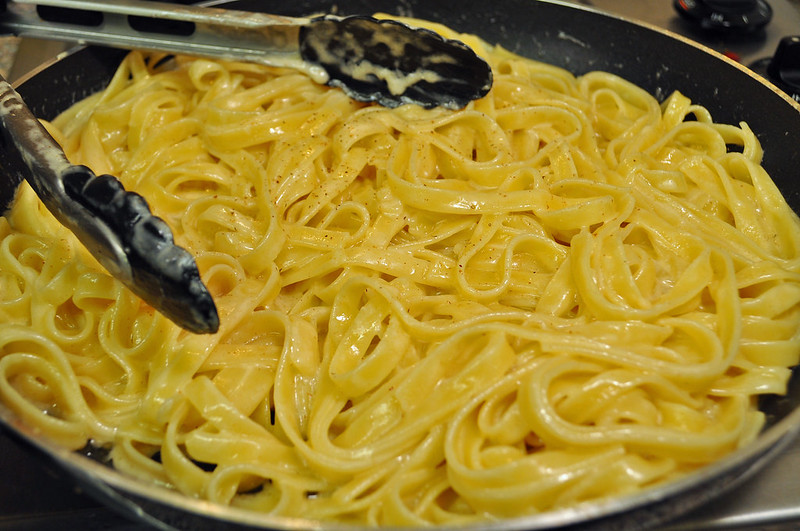It’s National Pasta Day, and here’s a pasta fact that might make me sound like I work for Duh Magazine: the pasta dish known as Fettucine Alfredo comes from an actual guy named Alfredo.
Saveur Magazine took a deep dive into Alfredonomy to get the backstory on the recipe and on its namesake.
Alfredo di Lelio owned and operated a restaurant known as Alfredo’s in the early 20th century, on Rome’s famous via della Scrofa.
In 1908 di Lelio’s wife, Ines, gave birth to Alfredo II, and depending on the telling, she was extremely worn out (understandably) or she lost her appetite, or maybe both.
To help the missus, the chef took a standard, straightforward recipe of fettuccine with butter and parmesan cheese, and he ramped up the butter considerably.
Nonetheless, Ines di Lelio liked the new recipe so much she suggested Alfredo add it to his restaurant’s menu.
He wisely followed her advice, and soon early 20th century Roman foodies were flocking to di Lelio’s place.
They loved the dish, and they loved the presentation: the chef would twirl the fettuccine with a gold fork, while a singer and a violinist performed nearby.
Fettuccine Alfredo became world famous in the 1920s, when American restaurateur and writer George Rector wrote a piece for the Saturday Evening Post about Alfredo’s signature dish.
Soon, movie stars were traveling to Rome to try it for themselves, and it spread from there.
But you may have noticed: butter was the key ingredient in the original fettuccine Alfredo, not cream like it often is here in the U.S.
Those creamy recipes came later, possibly because stateside butter wasn’t solid enough to serve as a sauce on its own.
Or, as author Todd Coleman suggested, the butter could have served as a sauce, as long as the cook twirled the butter, cheese and noodles together the way Alfredo di Lelio did.
Adding cream was a shortcut: it gave the sauce a similar enough texture, while saving the cook a lot of work.
It was this month in 1990 that a swarm of so-called “killer bees” crossed into the U.S. from Mexico for the first time on record.
The community of Hidalgo in south Texas decided to celebrate the occasion by spending $20,000 on a giant bee statue and declaring itself the world’s “Killer Bee Capital.”
The Real Alfredo (Saveur)
Hidalgo, Texas’s, Killer Bee Statue, a nod to a historical moment in October 1990 when the first known swarm of these “Africanized” bees was documented to have crossed into the United States from Mexico and into this little Rio Grande River community in far-south Texas (Library of Congress’s Public Domain Archive)
Five stars for each of our Patreon backers
Photo by James via Flickr/Creative Commons

